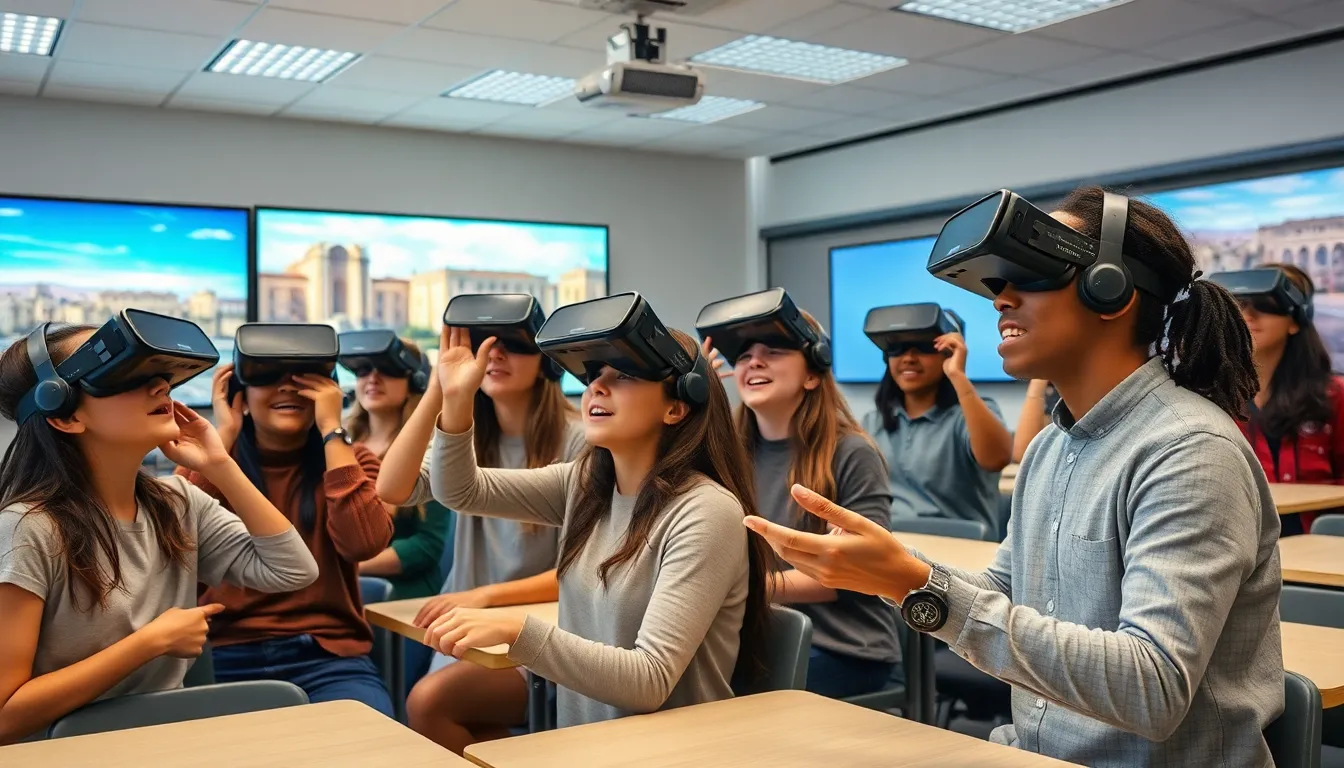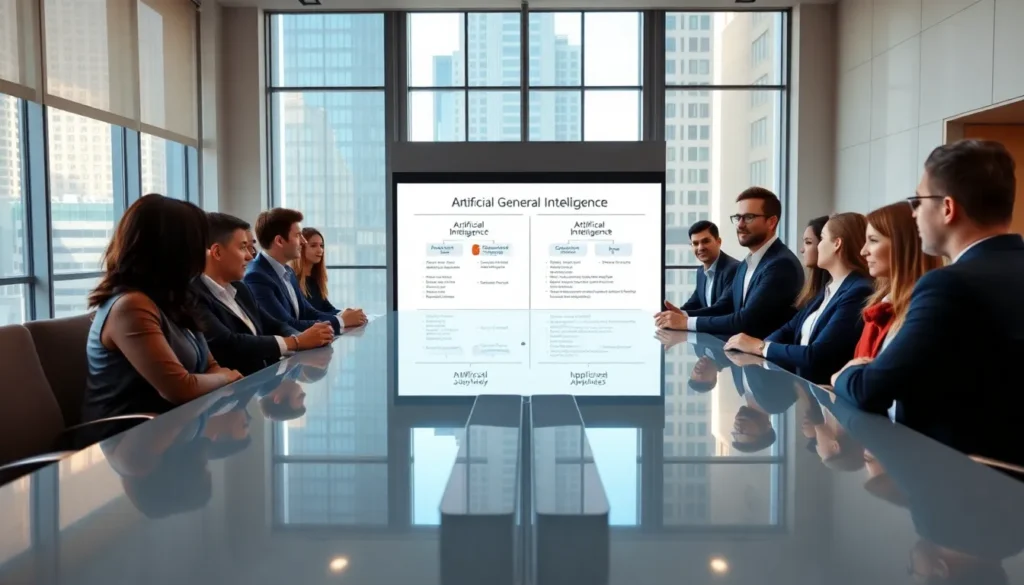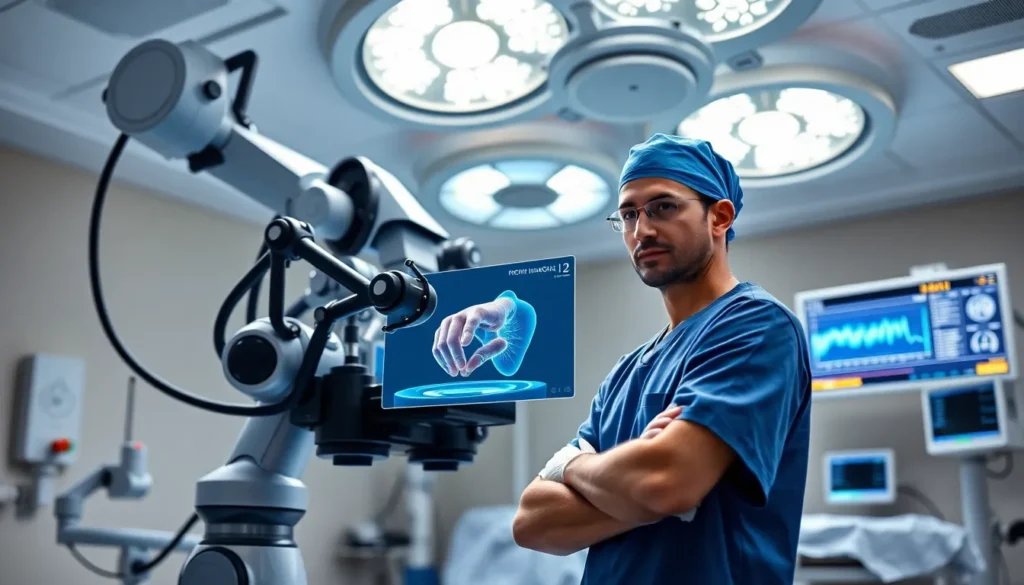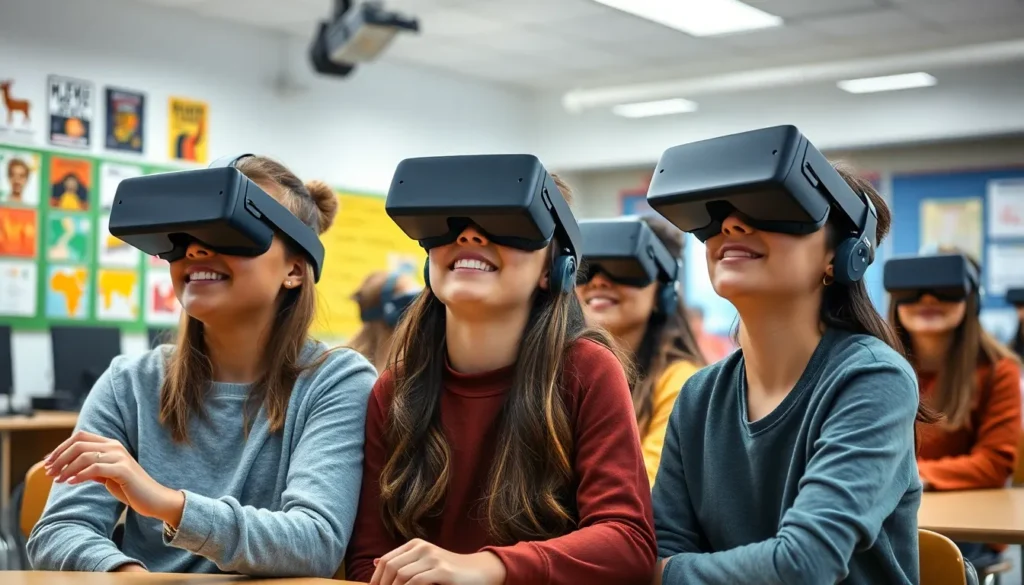Table of Contents
ToggleIn a world where technology evolves faster than a cat meme goes viral, the realm of education isn’t lagging behind. EdTech trends are shaking things up, making learning as engaging as binge-watching the latest series. Imagine classrooms where virtual reality transports students to ancient civilizations, or AI tutors that cater to every learner’s unique needs. Sounds like a sci-fi movie, right? Well, it’s happening now.
Overview of EdTech Trends
EdTech trends significantly reshape learning environments. Innovations like virtual reality (VR) transport students into interactive scenarios, enhancing engagement. Schools observe the growing use of artificial intelligence (AI) to provide tailored learning experiences, addressing diverse student needs.
Gamification increasingly captures student attention. By incorporating game elements into curricula, educators motivate learners and improve knowledge retention. Analytics tools track student performance, enabling teachers to make data-driven decisions for effective instruction.
Moreover, the rise of blended learning models combines traditional classroom settings with online resources. This flexibility fosters personalized learning pathways, allowing students to progress at their own pace. Mobile learning applications facilitate access to educational content anytime, anywhere, enhancing convenience.
Collaborative tools foster communication and teamwork among students. Digital platforms enable real-time feedback and peer interaction, encouraging a sense of community. Investing in digital literacy is essential, as technological proficiency prepares students for future careers.
Integrating social media into learning strategies promotes engagement and information sharing. Encouraging discussions on educational topics helps students develop critical thinking skills. As these trends continue to evolve, they promise to redefine how education is delivered and experienced.
Staying informed about EdTech trends empowers educators to enhance teaching strategies and improve student outcomes.
Emerging Technologies in Education

Emerging technologies significantly enhance educational practices and student experiences. Continued advancements in these areas influence how teachers and learners interact within classrooms.
Artificial Intelligence in Learning
Artificial intelligence transforms personalized learning. Smart algorithms analyze student performance, adapting content to meet individual needs. AI tutors can provide immediate feedback, which helps students grasp complex concepts more effectively. Tools like chatbots offer support outside classroom hours, addressing queries quickly. Major platforms utilize AI to encourage engagement and tailor learning experiences, ensuring that students receive relevant information suited to their pace. This innovative approach fosters a more inclusive environment and empowers educators to focus on individualized instruction.
Virtual and Augmented Reality
Virtual reality and augmented reality create immersive learning experiences. These technologies transport students to diverse locations, allowing them to explore historical events or scientific phenomena firsthand. With VR, students can engage in simulations that promote experiential learning. Augmented reality overlays information onto the real world, further enhancing understanding. Classrooms equipped with AR and VR tools foster engagement and retention, as learners interact with content dynamically. Educational institutions increasingly adopt these technologies to provide students with engaging, hands-on experiences that conventional methods cannot match.
Changes in Learning Environments
Innovations in educational technology continually reshape learning environments. These changes focus on enhancing accessibility and engagement through various methods.
Hybrid Learning Models
Hybrid learning models combine in-person instruction with online components, creating flexible learning opportunities. This approach allows educators to tailor lessons to diverse student needs. Students can engage in face-to-face interactions while also utilizing digital resources. Research indicates that hybrid learning can improve student outcomes by providing access to a wider range of materials. Flexibility in scheduling permits students to learn at their own pace, accommodating different learning styles and preferences. Such models emerge as a standard in many educational institutions, promoting a balanced mix of traditional and modern teaching methods.
Personalized Learning Approaches
Personalized learning approaches emphasize individual student needs, enabling tailored educational experiences. By utilizing advanced analytics, educators can identify specific strengths and weaknesses in students. These insights help design customized lesson plans that cater to unique learning pathways. Technology plays a critical role in delivering personalized content, allowing students to progress at their own pace. For instance, adaptive learning platforms adjust difficulty levels based on student performance in real-time. Such approaches significantly enhance engagement, fostering a deeper understanding of course material and improving overall retention rates.
The Role of Data Analytics
Data analytics plays a crucial role in shaping the educational landscape within EdTech. By harnessing vast amounts of data, schools can gain actionable insights into student performance.
Impact on Student Performance
Data analytics significantly enhances student performance through tailored learning experiences. Analytics tools track individual progress, helping educators identify strengths and weaknesses effectively. For instance, real-time assessments allow teachers to adjust instruction methods based on students’ learning needs. Consequently, students receive personalized support, fostering improved engagement and understanding. Programs leveraging predictive analytics highlight at-risk students, enabling timely interventions. Research shows that data-driven approaches boost academic achievement by approximately 20%. These trends emphasize the importance of analytics in optimizing educational outcomes.
Teacher Insights and Curriculum Development
Data analytics provides invaluable insights for teacher decision-making and curriculum development. By analyzing student engagement and performance metrics, educators can refine lesson plans and instructional strategies. Tools that aggregate data enable teachers to assess which resources yield the best results. With this information, curriculum adjustments can align more closely with student needs. Additionally, collaborative platforms allow teachers to share successful practices based on data findings. The result is a more dynamic and responsive curriculum that facilitates effective teaching. Leveraging analytics in development fosters an environment focused on continual improvement in educational practices.
Future Predictions for EdTech
Emerging technologies are set to redefine the landscape of education. Artificial intelligence is predicted to play an even larger role, as personalized learning systems become more sophisticated. Smart algorithms will analyze individual student performance, enabling tailored educational experiences and immediate feedback through tools like chatbots.
Virtual reality and augmented reality will greatly expand their presence in classrooms. Students can expect deeper engagement as they immerse themselves in historical events or complex scientific concepts in a hands-on manner. This technology aims to increase knowledge retention by fostering an interactive learning environment.
Blended learning models are likely to gain traction, combining traditional classroom settings with online components. Evidence suggests these hybrid approaches will improve academic outcomes by accommodating different learning styles and providing access to a broader range of resources. Personalized learning pathways remain vital, utilizing advanced analytics to design customized lesson plans based on each student’s unique strengths and weaknesses.
Data analytics will continue to shape educational practices. Schools will leverage extensive data to gain actionable insights into student performance. Tracking individual progress will help educators identify strengths and weaknesses, allowing for timely adjustments in teaching strategies.
Furthermore, predictive analytics will highlight students at risk of falling behind. Research indicates that early interventions can lead to an approximate 20% boost in academic achievement. As these technologies advance, they promise to create more effective learning environments. Collaborative tools will enhance communication and teamwork among students, preparing them for a connected, future-oriented workforce.
Conclusion
The landscape of education is undeniably shifting as EdTech trends continue to evolve. These innovations are not just enhancing learning experiences but are also making education more accessible and engaging for all students. As technology integrates deeper into classrooms, the focus on personalized learning, data-driven insights, and immersive experiences will only grow.
Educators and institutions that embrace these advancements will likely see significant improvements in student engagement and academic performance. The future of education is bright with the promise of tools that cater to individual needs and foster collaboration. Staying ahead of these trends is essential for shaping effective learning environments that prepare students for success in an increasingly digital world.







